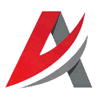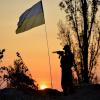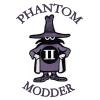Leaderboard
Popular Content
Showing most liked content on 08/26/2023 in Posts
-
8 points
-
7 pointsDornier Do-17K - 1st Bomber regiment, Parani Army Air Force, 1941 In June 1936, the Yugoslavian government ordered 36 Do 17E bombers from Germany and following protracted negotiations they eventually succeeded in obtaining a production licence to build the majority of these as the Do 17K variant powered by the French Gnome-Rhône Mistral Major engine. After production for the Royal Yugoslav Air Force was completed in April 1939 the Yugoslavian government were approached by Paran who wanted a new modern bomber aircraft for the rapidly expanding Parani Army Air Force and the sale of 24 Do 17K's was agreed. Entering service with the 1st Bomber Regiment of the Parani Army Air Force in early 1941 the Do 17K's were first used in anger in a successful attack on the Al'Mahrag Docks in northern Dhimar on September 21st, 1941. With only a handful of P-36's defending northern Dhimar, the Do 17K's of the 1st Bomber Regiment roamed virtually unchallenged over northern Dhimar until the arrival of the Republic P-43 Lancers in the Spring of 1942. Skin Credit: Charles
-
4 points
-
4 points
-
3 points
-
3 points
-
2 pointsYak-15 'Pero' - Soviet Air Force, 1946 The daring theft of a pre-production Jumo 004B axial flow turbojet engine from the Messerschmitt test facility at Leipeim airfield by Soviet spies in June 1943 enabled the Soviet Union to quickly catch-up with this new technology and before the year was out a team at 26 GAZ, headed by Klimov, were producing copies of the Jumo 004B as the RD-10 for a variety of planned Soviet tactical aircraft including a new single-seat jet fighter designed by the Yakovlev OKB. To save time, Yakovlev based the new design on their successful Yak-3 piston-engined fighter with the RD-10 jet engine mounted underneath the forward fuselage with the jet exhaust exiting underneath the centre fuselage protected by a steel heatshield. The wings and tail were largely unchanged and a useful armanent of two 23mm Nudelman-Suranov NS-23 cannon was added to the new nose section. Designated as the Yak-15 the new aircraft made a successful first flight in April 1944. However, the successful repelling of the Allied invasion by German forces in June 1944 allowed Germany to bolster their eastern front and slow down the Soviet advance to a crawl and especially during the harsh winter of 1944-45. This delay allowed Germany to deploy more and more advanced weapons and whilst the Me-262's remained largely in the west the radical Blohm & Voss P.170 three-engined 'Schnellbomber' was particularly effective on the eastern front. In February, 1945 the Yak-15 entered service with the 437th Fighter Aviation Regiment at Vodogon in the Novgorod Oblast and finally gave the Soviet Air Force the ability to intercept the P.170 nuisance raiders.
-
2 pointsCool pics! First found this on Il2: 1946, where the plane came with the belly metal plate simulated with a cool effect, and even the small deflector on rear wheel being that one solid to avoid problems with heat, nice details for such an old sim.
-
2 points
-
1 point
-
1 point
-
1 point
-
1 pointwas it you that said, how long? how long? to the point, of know return
-
1 pointI tried Il-2 and Strike Fighters Gold at exactly the same time back at the end of 2007 but, sadly, I just couldn't get on with the IL-2 series.
-
1 pointand the originally works just fine on around 99% of said systems hell, he probably coulda made a good chunk of change making pits for the non player flyables. especially if he released the way he did for all the other DLCs....... (cough cough A-6)
-
1 pointIf he would have offered more than an old, but now Win10 compatible game, the result would have been different. A fistfull new planes and anew war theater ... Perhaps Korea War. And he would had a lot if people which would be interested in.
-
1 pointThere are plenty of mods that can still be done for DCS, like infantry that attack enemy planes and helos, simulating helo gunners with fixed gun positions controlled by the player, adding roads and paths to the terrains so they look more realistic... TK will never return to the series, he tried and didn't got the money he expected, and that was for Win10, now we're on Win11.
-
1 pointHow then do open source programs work? How then does Falcon BMS exist? I'm talking about something completely different. But anyway it's too late to do something with the game. The game is very outdated. It remains only to play what is in hands but not in our dreams. In general, I didn’t expect that everyone would gather here, in this topic. I thought there would be one or two comments. Thanks to topick starter for good mood
-
1 pointYou forgot to assign a texture or material. Assign any texture, even just a gray square. An aircraft without a texture or material is displayed in the LOD viewer but invisible in the game. I think the problem in materials and textures
-
1 pointMe-109E-8. I dont know why it is called Bf-109 today. During wartime the pilots called it always "Me-109", never Bf-109.
-
1 pointI have never understood why Germany has not bought the F-18 Hornet. It's such a beautiful plane!
-
1 pointmy F-4E_70 cockpit has now his ejection seat , still early and some items are still missing
-
1 pointIspansi! High above Kursk the Spanish air ace Juan Lario Sanchez knocks down another Bf-109.
-
1 point
Important Information
By using this site, you agree to our Terms of Use, Privacy Policy, and We have placed cookies on your device to help make this website better. You can adjust your cookie settings, otherwise we'll assume you're okay to continue..
















